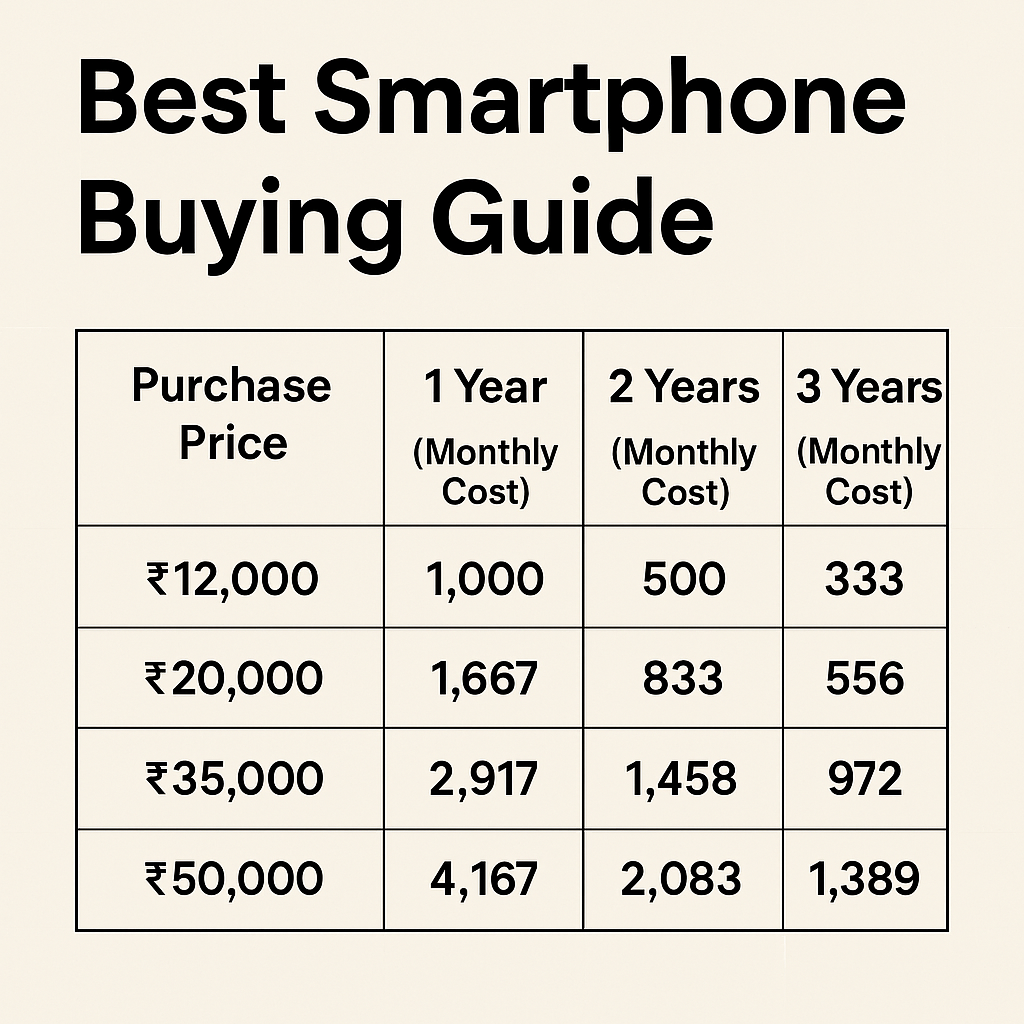
Buying a new phone? Don't fall for marketing traps! Learn how brands push frequent upgrades, which phone brands last the longest, and how much you should really spend. Find the best smartphone for your budget and avoid wasting money on unnecessary upgrades. #SmartphoneGuide #SaveMoney
Best Smartphone Buying Guide 2025: Avoiding Traps and Choosing Wisely
The Big Game of the Mobile Industry: Overheating, Expensive Repairs, and the Upgrade Trap
In today's world, mobile phones have become an essential part of our lives. But have you ever noticed how this technology is trapping us? I bought a Realme P2 Pro on September 30, and within just six months, it started having overheating issues. Even with basic use like WhatsApp or Facebook, the phone's temperature reached 55°C! The service center diagnosed a motherboard failure, which was replaced for free under warranty. But had this issue occurred just one year later, I would have had to pay ₹15,000 for repairs.
Is This a Deliberate Strategy?
Today, smartphone manufacturers and network providers are creating a system that forces consumers to buy a new phone every year. Earlier, phone upgrades used to happen every two years, but now a new model is launched every six months. iPhone 15 had just been released, and before users could fully utilize it, iPhone 16 was announced. This trend is not limited to Apple but applies to every major brand. To make matters worse, Realme P2 Pro itself was an upgraded version of Realme P2, and now they have already launched Realme P3. This endless cycle of minor upgrades forces users to buy new models frequently.
The Game of Systematic Slowdowns and Updates
Software updates are designed to gradually degrade older phones.
Network downgrades are done to push users toward new models.
Old models are made to lag, hang, and fail just before new launches.
Before 3G was stable, they introduced 4G. Before 4G became perfect, they pushed 5G, and now 6G is in the works.
Buying a smartphone today feels like a trap. Companies keep launching new models every six months, making older ones slow down through forced software updates. Many consumers spend ₹25,000 to ₹150,000 on a phone, only to find it becoming obsolete within a year or two. This guide will help you choose the right smartphone, understand brand reliability, and avoid wasting money on frequent upgrades.
How Much Should You Spend on a Phone?
| Price Range (₹) | 1-Year Cost (₹/month) | 2-Year Cost (₹/month) | 3-Year Cost (₹/month) |
|---|---|---|---|
| 12,000 | 1,000 | 500 | 333 |
| 15,000 | 1,250 | 625 | 417 |
| 20,000 | 1,667 | 833 | 556 |
| 25,000 | 2,083 | 1,042 | 694 |
| 30,000 | 2,500 | 1,250 | 833 |
| 40,000 | 3,333 | 1,667 | 1,111 |
| 50,000 | 4,167 | 2,083 | 1,389 |
| 60,000 | 5,000 | 2,500 | 1,667 |
| 75,000 | 6,250 | 3,125 | 2,083 |
| 1,00,000 | 8,333 | 4,167 | 2,778 |
| 1,25,000 | 10,417 | 5,208 | 3,472 |
| 1,50,000 | 12,500 | 6,250 | 4,167 |
Best Choice: Phones between ₹12,000 - ₹25,000 offer the best value, lasting 2-3 years without significant issues.
Spending this much money every month on a phone is absurd! In reality, governments and big companies are collaborating to create a system where people are forced to upgrade constantly
Which Smartphone Brand is the Best?
| Brand | Pros | Cons |
|---|---|---|
| Apple | Best performance, long software support, resale value | Expensive repairs, high cost |
| Samsung | Great displays, good cameras, durable | Some models slow down over time |
| OnePlus | Fast performance, clean UI | Slightly overpriced for hardware |
| Realme | Affordable, good features | Quality control issues, heating problems |
| Xiaomi | Budget-friendly, good battery life | Heavy software updates, ads in UI |
| Google Pixel | Best camera, clean Android experience | Limited availability, high price |
Verdict: If you want long-term reliability, go for Samsung or Apple. For budget users, Xiaomi or Realme are decent choices but may not last beyond 2 years.
People Also Frequently Asked Questions (FAQs)
1. Which phone is best under ₹15,000?
-
Samsung Galaxy M14, Redmi Note 12, Realme Narzo 50
2. Which phone brand is best for long-term use?
-
Apple and Samsung are best for 3-5 years of use.
3. Should I buy a 5G phone in 2025?
-
If you plan to keep the phone for 3+ years, yes. Otherwise, a good 4G phone is still sufficient.
4. Why do phones slow down after updates?
-
Software updates often introduce bloatware, reducing speed over time.
5. How can I increase my phone's lifespan?
-
Avoid auto-updates, keep storage below 80% full, and use a good quality charger.
6. Is it worth buying a phone over ₹50,000?
-
Only if you need flagship features like the best camera, performance, and long-term software support.
7. Should I buy a phone on EMI or with full payment?
-
Full payment is better to avoid interest. EMI is okay if it's 0% interest.
8. How do I check if a phone has good performance?
-
Look at processor type, RAM, and software optimization.
9. Are refurbished phones worth buying?
-
Yes, if bought from trusted sellers with a warranty.
10. How often should I replace my phone?
-
Every 3-4 years unless performance drops significantly.
Conclusion: Smart Buying Decisions
To avoid wasting money, follow these tips:
✅ Disable auto-updates unless necessary.
✅ Buy phones in the ₹12,000 - ₹25,000 range for the best value.
✅ Choose brands wisely based on longevity and reliability.
✅ Avoid frequent upgrades unless your phone is unusable.
By following this guide, you can save thousands of rupees while still enjoying a great smartphone experience!
How to Avoid This Trap?
Turn off auto-updates: Only update your phone manually when necessary.
Buy a long-lasting phone: There is no need to change brands frequently.
Consider motherboard repairs: Instead of paying ₹15,000 for a new motherboard, look for repair options.
Don't fall for network upgrade traps: 4G is still sufficient; don't rush into 5G and 6G.
Think about second-hand phones: Instead of buying an expensive new model, consider a well-maintained second-hand phone.
Conclusion
The mobile industry has become a business trap, where consumers are constantly forced to upgrade. Governments and corporations are deliberately designing technology in a way that makes older devices obsolete quickly. To avoid unnecessary expenses, we must be smart in how we use and buy our phones.
Recent Posts
-

-

Best Smart Phone Buying Guide: Avoiding Traps and Choosing Wisely
-

Reservation and Arakshan: Impact, Challenges, and the Road Ahead
-

Jio AirFiber Review: Slow Speed, Installation Issues & Customer Care Complaints
-

Kajaria Tiles in Pune – Best Dealers, Prices & Designs 2025
-

Cheque Bounce Case: Bombay High Court’s New Guidelines on Absentee Accused







